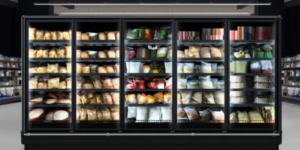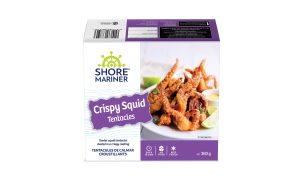Many direct-to-consumer (D2C) food brands have focused on mixing high-quality frozen products with convenient home delivery. Examples include Mosaic and Fly by Jing, which launched dumplings this year.
Focus group participants were initially sceptical about cooking seafood directly from frozen and were concerned that the dish would not cook properly or taste good. However, the presentation of chef-created recipes shifted their views. For more frozen food direct, check this out.
Convenience
 Frozen food has a long shelf life, making it a convenient cooking and meal preparation option. It also allows consumers to experiment with different recipes, flavours and packaging. This type of flexibility offers unique business opportunities for vendors.
Frozen food has a long shelf life, making it a convenient cooking and meal preparation option. It also allows consumers to experiment with different recipes, flavours and packaging. This type of flexibility offers unique business opportunities for vendors.
New Year’s resolutions are also driving the category’s growth. “As shoppers pursue healthy eating goals and focus on saving time, frozen foods are a natural fit,” according to IRI.
New-to-market direct-to-consumer brands are addressing these trends by offering high-quality, healthy frozen meals that can be cooked straight from the freezer. For instance, Mosaic Foods launched a lineup of seven freezer-to-microwave meals, while Fly by Jing added dumplings to its assortment last November. These innovations combine convenience and quality to appeal to various consumers.
Variety
While frozen foods may have gotten a bad rap in the past for being fast and unhealthy, several direct-to-consumer (DTC) food brands are redefining the category. DTC frozen food brands like Daily Harvest and Wildgrain focus on high-quality ingredients, a convenient online shopping experience and catering to dietary preferences.
Many pre-prepared frozen foods can be cooked straight from frozen, but reading the handling and cooking instructions on the packaging is essential. In particular, if an oven-baked dish states “cook from frozen,” it may take much longer to cook the item than a similar thawed meal would.
Develop recipes for your frozen foods that align with your target market’s health, wellbeing and dietary needs. Conduct recipe testing and make necessary adjustments to ensure your frozen products have the right texture, flavour and nutritional value.
Value
Frozen food direct is a valuable option for shoppers seeking to balance a demand for value with the desire to make healthy choices and accommodate specific dietary restrictions. The frozen food category as a whole remains in high demand. Meals, proteins and desserts are the most popular categories in the freezer section.
Analyze a company’s worth: Consider its commitment to sustainability and traceability in its products. Identifying these factors can support its brand reputation and differentiation from competitors. It also enhances customer satisfaction and loyalty.
In addition, evaluate indirect expenses such as advertising and marketing to assess the company’s profitability potential. A discounted cash flow analysis can provide an objective, unbiased assessment of the company’s worth. It incorporates revenue growth projections, operating expenses, and capital expenditures over a period and then discounts them back to their present value.
Health
While it’s ingrained in our minds that ‘fresh is best’, healthy frozen foods are an excellent option for those looking to cut food waste, make seasonal boundaries a thing of the past and get a good variety of nutritious ingredients into their diet.
The freezing process locks in nutrients, preserving the taste of fresh ingredients. It also eliminates the need for preservatives and allows us to enjoy foods that may not be in season all year round. For more frozen food direct, check this out.
Several direct-to-consumer brands like Fly by Jing, Mosaic Foods and more are turning the freezer aisle into a health-conscious one with their high-quality products. Whether it’s breakfast, lunch or dinner, they offer nutritious options that can be cooked in under 15 minutes. The convenience factor makes them an excellent choice for people with busy schedules.
Sustainability
Incorporating a frozen food business offers a variety of opportunities to support sustainability. Frozen food is often cheaper than fresh products, enabling consumers to buy and store large quantities for later use. It reduces the need for frequent shopping trips, which minimizes waste.
In addition, research demonstrates that households throw away less frozen foods than fresh foods, a significant factor in reducing food loss. Additionally, the long-term preservation process involving freezing allows for products to be shipped using less energy by sea or rail rather than air, which can lower carbon emissions. For more frozen food direct, check this out.
 When choosing a frozen food importer, you must be sure about the quality of the foods. Poor-quality frozen food will have a bad look and taste, and you don’t want your customers to be disappointed by the result. Ensure that your frozen foods are frozen using a quick freeze technique. It will ensure that the crystals are small and leave the product with a good texture and taste.
When choosing a frozen food importer, you must be sure about the quality of the foods. Poor-quality frozen food will have a bad look and taste, and you don’t want your customers to be disappointed by the result. Ensure that your frozen foods are frozen using a quick freeze technique. It will ensure that the crystals are small and leave the product with a good texture and taste.